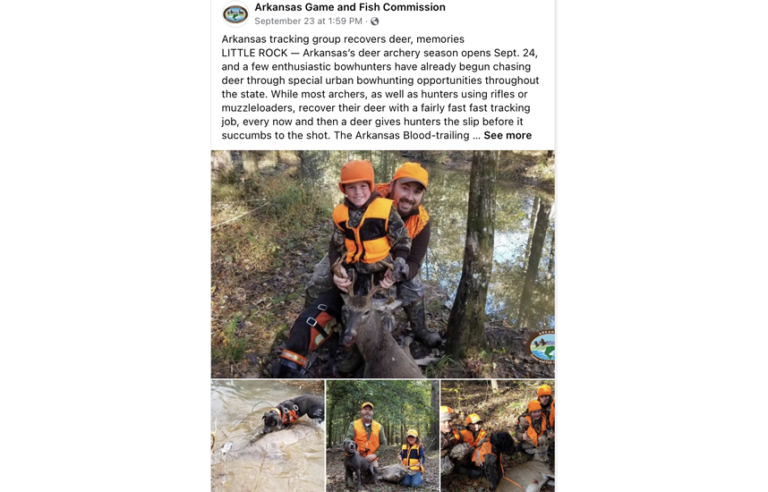An Example: Urban Bowhunting in Arkansas
The AGFC started an urban deer hunt program in the late 1990s. It required a lot of time and attention from agency staff, so the agency started working with the Arkansas Bowhunters Association and Bull Shoals Urban Bowhunters Association to maintain the program in nine cities throughout the state. The ABA oversees the program in seven cities, and the BSUBA oversees it in two. Between the two organizations, 770 bowhunters qualified in 2021.
To become a part of the urban deer hunt program, citizens must pay a registration fee, attend an orientation, pass a proficiency test, take a bowhunter education class and possess a valid hunting license through the AGFC. Each city has a minimum age requirement and its own hunting rules and harvest protocols. Additionally, each hunter in the program must donate their first kill to the Arkansas Hunters Feeding the Hungry program. The urban hunt offers unlimited deer tags for participants.
The state also has cities that offer urban bowhunting opportunities through the state’s Deer Management Assistance Program. The program provides technical assistance and allows city officials to have more control over the hunt itself. Meeker believes that DMAP provides opportunities to an additional 130 bowhunters. There are also cities in Arkansas that allow bowhunting as long as bowhunters follow state agency regulations.
The state sells 270,000 annual hunting licenses, and roughly 13% of the deer harvest is from bowhunters. With about 900 people participating in bow-only urban hunts, Meeker said a significant number of people get additional hunting opportunities through the program.
Urban Bowhunting Benefits
So, why should states and cities create urban hunting programs and opportunities, and why do so many bowhunters participate? The benefits. Here are the top urban bowhunting benefits, according to Meeker:
| City Benefits |
Bowhunter Benefits |
Other Benefits |
| Fewer deer-vehicle collisions |
Longer hunting seasons
|
Reduced nuisance calls for game wardens |
| Less landscape, garden and crop damage |
No bag limits (in some cases), so deer don’t count against a hunter’s license |
Bowhunters often donate deer to feed families in need |
| Fewer tick-borne disease problems for citizens |
No antler restrictions |
Safety is emphasized, and accidents are extremely rare |
| |
More places to bowhunt |
|
By sharing the benefits of urban bowhunting opportunities, you can likely win over city officials and get ordinances favorably changed. Thankfully, most states have agency members who can help.
Take Action
https://youtu.be/yPvj8txxsqU
If your city allows bowhunting, learn the rules and share them with your customers while encouraging them to participate. If your city doesn’t allow bowhunting, advocate for change.
Meeker said the best way to influence that change is to work with state agency staff and approach the city council together.
"A lot of times, cities prefer to receive guidance from a federal or state agency that is experienced in dealing with these types of situations,” he said. “There’s a different level of credibility there than maybe from a disgruntled citizen. I’d encourage ATA members, bowhunters, or whoever to reach out to their (state agency’s) deer program coordinator if they feel that their city would benefit from an urban deer hunt. Working with the local bowhunters association can also be helpful.”
It may take some time and persistence but organizing an urban deer hunting program can create new customers who have struggled in the past to find local places to hunt. Your efforts will likely be rewarded by increased business and bowhunter appreciation.
If you have questions or need help connecting with the right person at your state wildlife agency, please contact Josh Gold, ATA’s senior manager of R3 and state relations, at joshgold@archerytrade.org.


